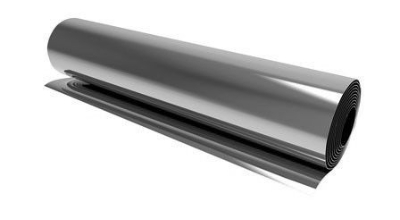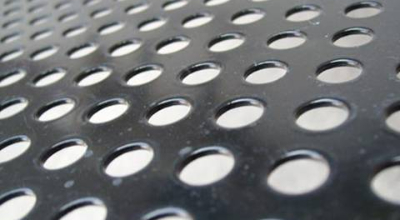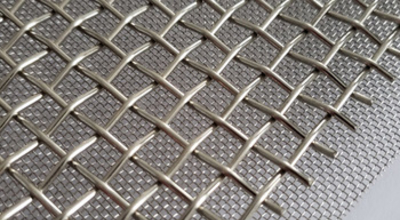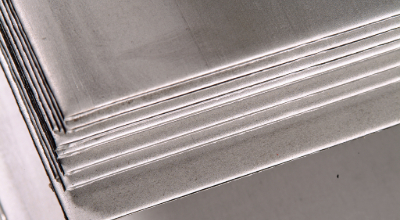Stainless Steel Products

Stainless Steel Supplier, Stainless Steel Plates & Sheets, Stainless Steel pipe & tube, Stainless Steel Flanges, Stainless Steel Fasteners
Stainless Steel Products Supplier & Exporter
Kalpataru Piping Solutions is India’s leading exporter and supplier of stainless steel products. Our extensive product range includes stainless steel pipe, stainless steel tube, plates, sheets, bars, rods, flanges, stainless steel fittings, fasteners, coils, and precision tubes.
Stainless steel is a versatile material widely used in various industrial and consumer products due to its excellent corrosion resistance, durability, and aesthetic appeal. You will commonly find stainless steel products in kitchens and bathrooms, where they are used for sinks, faucets, appliances, and cutlery.
In the automotive and transportation industries, stainless steel is essential for exhaust systems, trim, and components that need to resist corrosion and high temperatures. The construction industry also benefits from stainless steel for architectural features, structural supports, and cladding. Additionally, stainless steel products are used in medical equipment, marine hardware, and electronics.
With its unique combination of properties, stainless steel is a reliable and versatile material with applications across many different industries. Whether you need stainless steel pipe fittings, 304 stainless steel, or stainless steel sheet and plate, Kalpataru Piping Solutions has the quality products you require.
Types of Stainless Steel Products
Composition of Stainless Steel
Stainless steel is a type of steel alloy known for its high resistance to corrosion, staining, and rust. It is composed of several different elements, each contributing to its unique properties:
Iron (Fe): The primary component of stainless steel, iron forms the base of the alloy.
Chromium (Cr): The most crucial element in stainless steel, chromium provides corrosion-resistant properties. The chromium content typically ranges from 10.5% to 30%.
Nickel (Ni): Added to enhance corrosion resistance, ductility, and toughness.
Carbon (C): Improves strength and hardness.
Molybdenum (Mo): Increases resistance to pitting and crevice corrosion in chloride-containing environments.
Titanium (Ti): Enhances resistance to intergranular corrosion.
Copper (Cu): Improves resistance to sulfuric acid.
Nitrogen (N): Sometimes included to improve strength and corrosion resistance.
The exact composition of stainless steel can vary depending on the specific grade and application, leading to many different types of stainless steel, each with unique properties.
Stainless Steel Grades
There are many different grades of stainless steel, each with unique composition and properties. Here are the most common types:
Austenitic Stainless Steel
- Description: The most widely used type, accounting for around 70% of all stainless steel production.
- Properties: Highly corrosion-resistant and non-magnetic.
- Applications: Kitchen appliances, sinks, food processing equipment.
- Popular Grades: 304, 316, 321.
Ferritic Stainless Steel
- Description: Less corrosion-resistant than austenitic stainless steel but more resistant to stress corrosion cracking; magnetic.
- Applications: Automotive and industrial applications.
- Popular Grades: 409, 430.
Martensitic Stainless Steel
- Description: Hard, strong, and corrosion-resistant; magnetic.
- Properties: Lower corrosion resistance compared to austenitic and ferritic stainless steels.
- Applications: Knives, cutlery, high-wear applications.
- Popular Grades: 410, 420.
Duplex Stainless Steel
- Description: A combination of austenitic and ferritic stainless steels, offering high strength and corrosion resistance.
- Applications: Chemical processing, oil and gas production, industrial applications.
- Popular Grades: 2205, 2507.
The choice of stainless steel grade depends on the specific application and desired properties, such as corrosion resistance, strength, and magnetism.
Hot Rolled Stainless Steel
| Hot Rolled Stainless Steel | |
| Thickness | 2.5 – 8.0 mm |
| Width | 750 – 1275 mm |
| Coil ID | 762/610 mm |
| Condition | Annealed and Pickled |
| Edge | Mill Edge |
| Sheet | 1500 to 6300 mm |
Cold Rolled Stainless Steel
| Cold Rolled Stainless Steel | ||
| Coil | Sizes (mm) | |
| Dimension | Range (mm) | Standard Size (mm) |
| Thickness | 0.3 to 6.00 | 0.30,0.40,0.50, 0.55, 0.63, 0.70, 0.80, 0.90, 1.00, 1.25, 1.50, 1.60, 2.00, 2.50, 2.80, 3.00, 3.15, 3.60, 4.00, 5.00, 6.00 |
| Width | 50 to 1250 | 1000, 1250 |
| Inner Diameter | 406, 508 or 610 | |
| Sheet /Plate | Sizes (mm) | |
| Dimension | Range (mm) | Standard Size (mm) |
| Thickness | 0.5 to 6.00 | 0.50, 0.55, 0.63, 0.70, 0.80, 0.90, 1,00, 1.25, 1.50, 1.60, 2.00, 2.50, 2.80, 3.00, 3.15, 3.60, 4.00, 5.00, 6.00 |
| Width | 600 to 1250 | 1000, 1250 |
| Length | 500 to 4000 | 1500, 2000, 2500, 3000, 3500,4000 |
Stainless Steel Applications
Stainless steel is a versatile material widely used in various industrial and consumer applications due to its excellent corrosion resistance, durability, and aesthetic appeal. Some common applications include:
Kitchen and Food Processing Equipment
Automotive and Transportation
Construction and Architecture
Medical Equipment
Marine Hardware
Electronics
Aerospace and Defense
With its unique combination of properties, stainless steel proves to be a reliable and versatile material suitable for a wide range of applications across various industries.
We Export To Stainless Steel Products
New Zealand, Ukraine, Brazil, Azerbaijan, Angola, United Kingdom, Philippines, Oman, France, Algeria, Macau, Sri Lanka, Tibet, Norway, Mexico, Venezuela, Denmark, Russia, Bhutan, Estonia, Austria, Vietnam, Argentina, Turkey, Greece, Romania, Bahrain, Bangladesh, Afghanistan, Italy, Poland, Zimbabwe, Thailand, India, Kenya, Ecuador, Puerto Rico, Nepal, Malaysia, Bulgaria, Libya, Slovakia, Chile, Serbia, Australia, Poland, Iran, Costa Rica, Peru, South Korea, Iraq, Iran, Indonesia, Spain, Trinidad & Tobago,Tunisia, Qatar, Japan, Canada, Taiwan, Yemen, Mongolia, Czech Republic, Israel, Ghana, Egypt, Nigeria, Saudi Arabia, United Arab Emirates, Namibia, Hungary, South Africa, Hong Kong, Croatia, Colombia, Lebanon, Nigeria, Portugal, Finland, Pakistan, Jordan, Sweden, Belgium, Gambia, Lithuania, United States, Chile, Bolivia, Germany, Singapore, Ireland, Gabon, Kuwait, Switzerland, Mexico, Belarus, Kazakhstan, Morocco, China, Netherlands, Germany, Belgium, Italy, Turkey, Denmark and UK.
FAQ
What is stainless steel metal?
Stainless steel is a corrosion-resistant alloy of iron, chromium, and sometimes nickel and other metals. Known for its recyclability, it is considered an eco-friendly material with a nearly 100% recovery rate in the construction sector. Its resistance to rust and staining, combined with its low maintenance and familiar luster, make it an ideal material for many applications.
What are the components of stainless steel?
Stainless steel, also known as inox, is an alloy primarily composed of iron and chromium. Additional elements such as molybdenum, carbon, nickel, and nitrogen can also be included depending on its intended use and cost. Chromium is key to its corrosion resistance, while elements like nickel and molybdenum enhance other properties such as strength and toughness.






